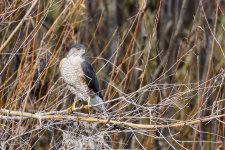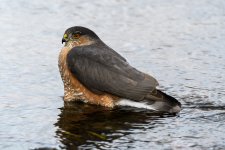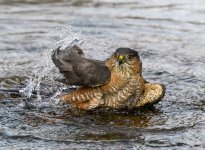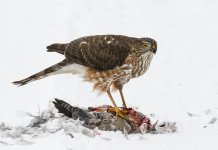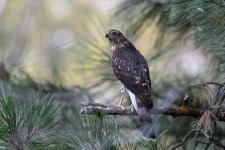montanawildlives
Well-known member
Here are a few pictures that I think are either Sharpies or Cooper's hawks...would love some direction. The first three are the same bird at the same time. Also, if you don't mind a brief description of how you reached your conclusions (e.g., the lack of a "capped" look made me think Sharpie, the white undertail coverts (?) made me think Sharpie, etc.).
Thanks!
Thanks!




